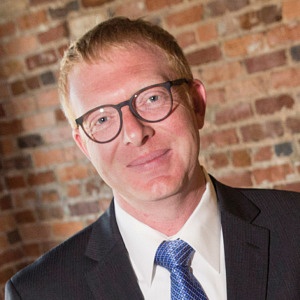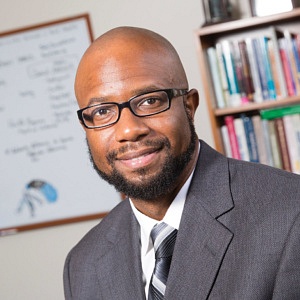Grace Bagwell Adams experienced a number of firsts the day she welcomed her daughter Bonnie into the world. She was a first-time mother. But due to an emergency cesarean section, she also had her first introduction to opioid medications.
She left the hospital with a baby in her arms and a 30-day supply of opioids. She only used three days’ worth.
“If I’d used my entire prescription, I would have been on opioids for 40 days including my hospital stay, which is long enough to possibly develop a dependence,” she says. “It was an eye-opening experience.”
Adams is well-versed in the issues surrounding opioid misuse and addiction. As an assistant professor of health policy and management at the College of Public Health, she examines how policies are being used to address and, hopefully, curb the opioid epidemic.
“States are furiously trying to figure out how to legislate and control the opioid epidemic from getting any worse,” Adams says.
According to the Centers for Disease Control and Prevention, opioids are responsible for around 115 deaths each day in the U.S., a rate that’s expected to grow.
Most states are enacting policies to address the immediate need—preventing death, she says. Almost every state, for example, has broadened access to Naloxone, the opioid overdose reversal drug.
But other efforts focus on stemming the number of opioid medications entering the community. These supply-side policies, such as prescription drug monitoring programs (PDMPs), which monitor opioid prescribing and dispensing through an electronic database, are becoming more popular.
“Because these policies are coming about so quickly and most are fairly new, we don’t have a lot of empirical evidence showing whether or not they will do anything for the opioid epidemic,” Adams says. “That leaves a huge frontier of research that needs to be done.”

In UGA’s College of Pharmacy, professor Matthew Perri and associate professor Jayani Jayawardhana are researching a question about a change in Georgia’s Medicaid that could hold answers for opioid policy nationwide.
Data show that Medicaid populations in Georgia and across the U.S. have been harder hit by the opioid epidemic than other groups, due to the compounding impacts of poverty, limited access to quality health care and low education levels.
“This is considered a sicker population,” says Perri. “They use more medications—including opioids—so they’re more at risk.”
In 2013, Georgia made changes to its Medicaid program aimed at keeping opioid medications out of the hands of those who don’t need them. The new policy monitors prescribing practices and limits the number of prescriptions and refills a patient can access per month.
Perri and Jayawardhana, with UGA faculty collaborators Amanda Abraham and Henry Young, are leading an evaluation of the policy to learn if the changes are working to curb opioid use. Georgia’s Medicaid agency needs to be confident that its policies help, rather than harm, those who need it, Perri says. In addition, the outcome of Georgia’s policy may inform efforts in other states.
In the first findings of the multiyear study, the researchers see mixed results.
Overall, opioid use and unnecessary prescribing are on the rise among Georgia Medicaid users, the team found. The data showed that older white men and those on fee-for-service plans are using more opioid medications than others in the program. This suggests that the policy may need to be adjusted to better target at-risk groups, says Jayawardhana.
Perri, however, is not discouraged. The study only captures data through 2014, which may not reflect more recent changes in provider habits and growing public awareness of the dangers of opioid drugs.
“I think we’re well on the way to a fix,” he says, “but kind of like recovering from a disease, it’s going to take a long time for our society to recover.”
Restricting inappropriate access to opioid medications is just one of 10 recommendations Georgia’s Substance Abuse Research Alliance (SARA) presented to state legislators at the end of 2017. Amanda Abraham, assistant professor of public administration and policy at the School of Public and International Affairs, co-authored the SARA paper that outlined the severity of the opioid epidemic in Georgia and set forth a policy roadmap.

Funding substance abuse treatment is crucial in addressing Georgia’s opioid-related deaths, which increased 24 percent from 2014 to 2016, says assistant professor Amanda Abraham. Photo: Terry Allen
Georgia experienced a 24 percent increase in opioid-related deaths from 2014 to 2016. To address the sharp increase in deaths, funding substance abuse treatment is a crucial action, says Abraham, who is a member of SARA’s executive committee.
Abraham studies the impact of state and federal policy on the accessibility and quality of substance abuse treatment. She has observed the positive impact of such policies in her work with the National Drug Abuse Treatment System Survey, a study that collects data on how health reform is influencing substance abuse treatment efforts across the country.
Based on interviews with key stakeholders implementing health reform policies, Abraham learned that several states had decided to expand their Medicaid programs specifically to address the opioid epidemic.
“There were a lot of resources that were opened up to the states when they expanded Medicaid to treat people because those plans were required to cover substance use disorder treatment for the first time,” she says.
Finding the right policy is a moving target, she says, as new problems associated with the epidemic begin to emerge. Policies limiting the number of opioids being prescribed, for example, do nothing to address illicit drug use. In 2016 alone, overdose deaths due to one commonly used opioid—fentanyl—tripled.
“Illicit fentanyl and heroin use are not addressed by PDMPs,” Abraham says. “So then you need policies designed to address the illicit drug market.”
“A multipronged approach is necessary.”
Despite a renewed focus on providing care for substance abuse, finding treatment services—especially high-quality treatment—is still a struggle for many.

Doctors don’t always know where to refer patients with substance abuse problems, says assistant professor Orion Mowbray, who is identifying geographic hotspots of opioid use-related problems. Photo: Dorothy Kozlowski
School of Social Work assistant professor Orion Mowbray researches ways to improve the availability of substance use treatment services and help providers know where to refer patients who need help.
Specialty care referrals are more straightforward for physical ills, Mowbray says. A primary care provider knows where to refer a patient with a back injury, “but when someone comes in and says, ‘I think I have an addiction’ or ‘I’m experiencing trouble controlling my use,’ most doctors have no idea where to refer them.”
Mowbray and UGA faculty collaborators Paul Roman and Lydia Aletraris are working with Athens’ Advantage Behavioral Health—an agency that provides behavioral health, developmental disability and addictive disease services—to identify geographic hotspots of opioid use-related problems. The effort also entails identifying existing services that are available in the 10-county area surrounding Athens and determining whether those services include medication-assisted treatment (MAT).
MAT is considered the gold standard of opioid addiction treatment. The Food and Drug Administration has approved three medications for use in the treatment of opioid dependence: methadone, naltrexone and buprenorphine. A daily dose of any of these medications quiets cravings, so patients can go about their day normally—and be in a better frame of mind to receive behavioral treatment for their addiction.
Part of Mowbray’s project includes interviewing treatment providers to learn their attitudes about MAT and barriers they see to its implementation. Some critics of MAT say it simply replaces one drug with another, but Mowbray says that’s missing the point of the treatment.
“Medication-assisted treatment is meant to be integrated with consistent monitoring and additional therapies, and it’s really only effective when it is,” he says. “A lot of critics have this notion of ‘they just go down to the methadone clinic and get their pills and are on their way,’ and that’s not at all how it works.”
Mowbray hopes that this work will serve as a model for other communities in Georgia that want to expand treatment opportunities for people battling opioid addiction.
Many opioid-abuse problems could be avoided if patients had a better understanding of how to use these medications appropriately and safely, says Henry Young, Kroger Associate Professor of Community Pharmacy at the College of Pharmacy. In collaboration with the Archway Partnership and the new Georgia Clinical and Translational Science Alliance, Young is holding focus groups with physicians and pharmacists across eight rural Georgia communities to learn how the opioid epidemic is affecting their practice and patients.

Addressing health literacy, Young says, has a role in preventing opioid misuse. Health care providers are often their patients’ primary source of education about the addictive potential of opioid medications, yet study after study suggests that patients and providers aren’t having these crucial conversations.
“There are communication challenges in that patient-provider interaction that we need to overcome,” he says.
Ideally, providers would engage in basic health literacy strategies to ensure that patients clearly understand how to use their opioid medications safely and appropriately, Young says. One common approach, known as the teach-back method, asks patients to repeat the information they just received in their own words.
However, this technique takes time—a scarce resource in an environment where physicians only have minutes with each patient.
Young is exploring the possibility of a shared opioid education curriculum that physicians and pharmacists could use to support patient education in order to overcome this persistent time crunch barrier.
This curriculum would include key messages emphasizing safe use, storage and disposal of opioid medications, along with explanations of the potential dangers of sharing medications with a friend or family member.
Young hopes that the focus groups he is conducting with physicians and pharmacists will open an important dialogue.
“I’m trying to build bridges between these health care professionals, to help them see what each one is doing, the challenges each is facing,” he says, paving the way to shared responsibility for patient education.
When it comes to curbing the opioid epidemic, a one-size-fits-all approach won’t work, says Adams, whose current project takes a nontraditional approach to policy.
“It’s less about legislating around the opioids themselves and more about providing a substitute for treatment of chronic pain or other disorders that would traditionally be treated with opioids,” she says.
One option that is becoming more mainstream is the use of medical marijuana. The number of states that have legalized medical cannabis has grown from one—California—in 1996 to 29 states and D.C. in 2017. Since most of the country has little or no experience with medical cannabis, says Adams, there are still many unknowns about how best to regulate usage.
“We don’t know the effect of those laws to the extent that we need to know them,” she says.
Adams, along with Abraham, and David and Ashley Bradford at the School of Public and International Affairs, has amassed significant data drawing correlations between medical cannabis policy decisions and opioid use. The question they set out to answer: When a state says yes to medical cannabis, what effect does it have on the opioid epidemic?
One of Adams’ projects showed that when states opened avenues to medical cannabis dispensaries, they began to see a significant reduction in opioid-related deaths.
“In 2015 alone, if all states had had a dispensary in place as a potential substitute for patients who needed treatment for chronic pain, there would have been a significant decrease in opioid overdose deaths.”
Not everyone will welcome a solution based in medical cannabis, but the public should be open to alternative methods for managing pain, including chiropractic and physical therapy, says Adams, and only use opioids when there is no other option.
An opioid-centric approach to treating pain may be at the root of the epidemic, but the consequences of opioid abuse are varied and tangled.
“We’re going to have to attack this from all angles,” she says. “It’s going to have to be a shared responsibility between policymakers, politicians, private firms, patients, care providers—everybody chipping in.”
“Because otherwise you leave a gap, and it continues.”






